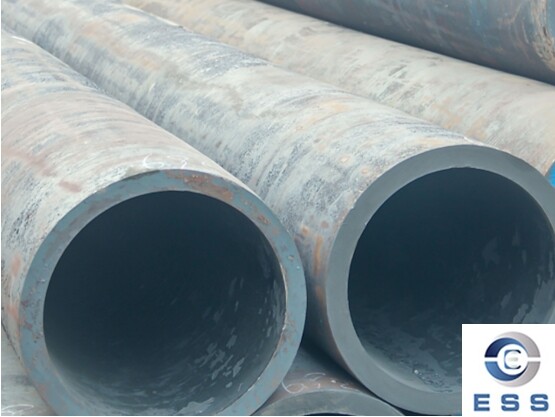
In industrial production, the normal
operation of boiler
tube is crucial to the entire production process. However, the generation
of rust will affect the performance of boiler tubes, so an effective iron
removal process is essential. What are the iron removal processes for boiler
tubes?
Physical method
1. Water flushing method
The water flushing method is to impact the
inner wall of the pipe with water at high speed to wash away rust and silt. It
is suitable for boiler tubes that are thick, curved, and have more side holes.
This method is simple to operate, but it consumes a lot of water.
2. Friction method
The friction method is to use a machine to
insert the brush head into the boiler tube for mechanical air removal, which
can effectively remove rust and sediment. This method is usually used for
rougher pipe systems, and the operation is more complicated, so safety
precautions must be taken.
Chemical method
1. Pickling method
The pickling method is to inject acid into
the boiler tube to react with the rust on the inner wall of the pipe and fall
off, so as to achieve the purpose of cleaning the inner wall of the pipe at
room temperature. Although the effect is obvious, it requires strict control of
the concentration, time, temperature, etc. of the acid solution to avoid
corrosion of the boiler tubes. Boiler tubes of different materials, such as carbon
steel pipe and seamless
steel pipe, have different tolerances to acid solution, and the acid
solution formula and treatment parameters need to be adjusted according to the
specific material.
2. Alkaline washing method
The alkaline washing method uses alkaline
solution as the main cleaning agent, which can remove insoluble substances
accumulated in the boiler tubes and also remove rust. The operation is simple,
but the concentration and time requirements in the chemical method must be
followed.
3. Oxidation-reduction method
The oxidation-reduction method uses
chemical reactions to reduce rust to iron ions, and then removes it with a
cleaning agent. This method is relatively safe. However, attention should be
paid to the concentration of the reaction solution and the mastery of operating
skills.
Mechanical method
1. High-pressure flushing method
The high-pressure flushing method uses
high-pressure water flow to flush out the rust and sludge in the boiler tube to
achieve the purpose of rust removal. This method is highly efficient, but
requires professional operation. For some joints, such as boiler tubes
connected by pipe
flange, excessive pressure may affect the sealing of the joints.
2. Blasting method
The blasting method is a method that uses
explosions to radially impact the inner wall of the tube to quickly remove rust
and sediment. This method is effective, but the boiler tube needs to be
repaired and evaluated after the blasting.
Summary
In summary, there are different methods for
removing rust. You need to choose a method that suits you according to the
actual situation. During the operation, you need to ensure safety and strictly
follow relevant laws and regulations and operating specifications to avoid
accidents.













 Eastern Steel Manufacturing Co.,Ltd not only improve product production and sales services, but also provide additional value-added services. As long as you need, we can complete your specific needs together.
Eastern Steel Manufacturing Co.,Ltd not only improve product production and sales services, but also provide additional value-added services. As long as you need, we can complete your specific needs together.










